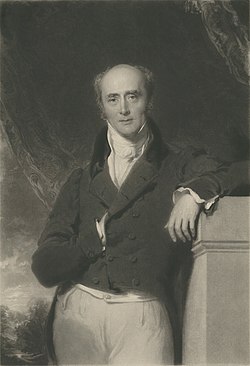
The Swing Riots were a widespread uprising in 1830 by agricultural workers in Southern England and Eastern England in protest of agricultural mechanisation and harsh working conditions. The riots began with the destruction of threshing machines in the Elham Valley area of East Kent in the summer of 1830 and by early December had spread through the whole of southern England and East Anglia. [1] It was to be the largest movement of social unrest in 19th-century England. [2]
Contents
- Name and etymology
- Background
- Enclosure
- Precarious employment
- Poor Laws
- Tithe System
- Industrialisation
- Riots
- Tactics
- Aftermath
- Trials
- Social, economic and political reform
- See also
- Notes
- Citations
- References
- External links
As well as attacking the popularly-hated threshing machines, which displaced workers, the protesters rioted over low wages and required tithes by destroying workhouses and tithe barns associated with their oppression. They also burned ricks and maimed cows. [1] [3]
The rioters directed their anger at the three targets identified as causing their misery: the tithe system, requiring payments to support the established Anglican Church; the Poor Law guardians, who were thought to abuse their power over the poor; and the rich tenant farmers, who had been progressively lowering workers' wages and introduced agricultural machinery. [1] If captured, the protesters faced charges of arson, robbery, riot, machine-breaking and assault. Those convicted faced imprisonment, transportation and possibly execution. [4]
The Swing Riots had many immediate causes. The historian J. F. C. Harrison believed that they were overwhelmingly the result of the progressive impoverishment and dispossession of the English agricultural workforce over the previous fifty years leading up to 1830. [1] In Parliament, Lord Carnarvon had said that the English labourers were reduced to a plight more abject than that of any race in Europe, with their employers no longer able to feed and employ them. [5] [6] A 2020 study found that the presence of threshing machines caused greater rioting and that the severity of the riots was lowest in areas with abundant employment alternatives and the highest in areas with few alternative employment opportunities. [7] [8]


